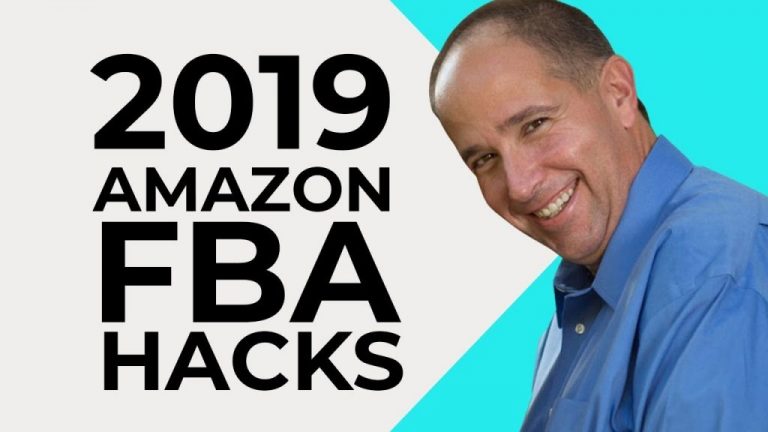Last updated on June 17th, 2020 at 09:23 am
Kevin King Tip 1. Understand The “Gibberish” In Your Search Term Reports.
If you’ve ever checked out your sponsored ad reports, you’ve probably seen the string of numbers and letters that come from your auto reports. These are actually competitor ASINs displaying your product. This is a gold mine of untapped revenue.
Search, or when customers type in keywords looking for your product, only amount to 50% of sales on Amazon. The other 50% are from other traffic sources and product ads that use the space of product pages to display ads. With all the big brands dumping money blindly into the Amazon platform, it’s a good time to know where to put your marketing dollars, which is on competitors’ listings.
Kevin King Tip 2. Make Money From Your Competitor’s Money.
The gold is in product ads. Product ads use the traffic going to your competitors and display your product on the bottom of their listing. Before you needed to have access to Amazon Marketing Services to use this data, but now you can do it right in Seller Central.
Go into SC and select Manual Campaigns. Then you’ll select Product Targeting and target the top-selling competitors in your niche. It’s important to note that you’ll sort your competitors by most units sold, not revenue. This means they’re doing more volume and have more traffic on their listing.
There are three ways to test Product Targeting ads:
- Take ASIN data from your Search Term Reports as mentioned above
- Use a tool like Helium 10 to sort competitors by sales units and use their ASINs
- Take the ASINs of complementary products. This can be as simple as targeting “Yoga Blocks” to sell “Yoga Mats” or even using a tool like Yasiv.com to find complementary products.
Kevin King Tip 3. PPC Is Only One Part Of Your Marketing Mix.
Despite what everyone preaches about PPC, ACOS is not everything. Having a low ACOS is definitely a good thing to have and aim for, but it shouldn’t fully make your marketing decisions. PPC sales should account for 20 – 25% of your overall sales. If it’s higher than that then you need to work on your organic sales.
This is how you can figure out how many organic vs PPC sales you have:
- Download your Search Term Report for the month.
- Check the units sold for that specific ASIN
- Compare it against the number of units sold in Seller Central
- For example, if you sold 40 units overall and your report says you sold 10 units, you’re PPC sales makeup 25% of your sales.
There are times when having a near breakeven or slightly negative ACOS makes sense for your business. For instance, being able to spend on a higher volume of keywords, to make sure you’re getting sales that wouldn’t normally come in.
This allows you to create more brand awareness and rank your product overall. It is said that the advertiser that can spend the most money (profitably of course), will make the most money. This also means to continue spending on PPC even when you’re on page one; when you’re on page one, keep up the sales velocity to stay there. When you look at your sales volume both from an organic and paid perspective, you can make informed business decisions to grow.
Kevin King Tip 4. Use A Messenger Bot To Launch And Rank Your Product.
Messenger marketing was hot in 2018 and will continue to grow in popularity. Right now the open rates are three times more than email marketing. This is a massive growth opportunity for your Amazon business. You can pay for cheap traffic and have incredible open rates. Traffic + Open Rate = ROI
This is how you can use Messenger Bots for launches:
- Create or find someone that can create a Manychat flow and run a Facebook ad that offers a displayed discount, like 20% off.
- While they’re there incentivize scarcity by offering a higher discount if they’re willing to purchase right then and there. For example, offer 40% off instead of 20% if they’ll buy now.
- Then if they say yes, walk them through how to purchase your product. This is where it gets fun. Tell them to open up a separate browser, enter the keyword you want to rank for and click through to whatever page your product is on. This imitates normal shopping behavior for a product and Amazon’s algorithm will effectively index that sale.
Make sure to keep your Messenger flow conversational while asking for responses and clicks to move through it, this shows Facebook that your audience is interacting and clears you for promotional messaging.
Kevin King Tip 5. First Impressions Matter, Don’t Skimp On Product Photos.
The Amazon marketplace is filled with smaller brand names with little recognition. Customers are coming into the marketplace not knowing anything about your brand. Your photos are their first impression of your brand. There are a ton of sellers making the mistake of using their phones to take photos or having someone do it for free.
Having professional photos taken is an investment, not an expense. If you increase your conversion rate from 10% to 11% just because of professional photos, you’ve just increased your overall revenue by 10%.
Kevin King Tip 6. Amazon SEO Demystified.
Most of your sales come from 3 to 8 keywords. This accounts for 90% of all your sales, focus on these keywords when you’re just starting out. There are three main components of Amazon SEO: title, subject matter fields, and additional backend fields such as intended use. The description and bullet points aren’t weighted the same as the other three when it comes to ranking.
Let’s go over how to optimize each of them:
- Title: Shorter titles are performing better now. You can still start with your longer keyword-stuffed title to start, but after a few weeks of data from your search term reports, you should choose 3 – 8 and use that in your title.
- Subject Matter Fields: These five fields should be filled with exact phrases people would use to purchase your product. You can use PPC data, Amazon’s search bar, or keyword research tools such as Helium 10.
- Backend Additional Fields: This is where it gets interesting. Amazon hides a certain report called “Category Listing Report”. You’ll need to create a support ticket and request for them to release it. They’ll release it temporarily so you can download it. You’ll then download your browse tree guide (which you can find here) and your ASIN’s flat file. Look for the “help” tab inside the reports.
This will have the info for the additional fields filled out from similar products in your category. Use this data to fill your backend. You won’t find all of the fields filled out and some of the entries won’t make sense. Just take what you can and optimize your backend with it. This should help with PPC costs, outranking your competition, and increase relevancy for your listing.
Kevin King Tip 7. Don’t Give Up.
That’s right. This is the last tip and it’s the most important. Amazon isn’t a get rich quick scheme. This is one of the most lucrative business models in existence right now… IF you treat it like a business. The Amazon business buyer’s market is at an all-time high, with incredible multiples when you exit. There are private equity firms and family trusts ready to buy at insane multiples. Focus on product selection, don’t take money out for the first couple years, and stay persistent.



